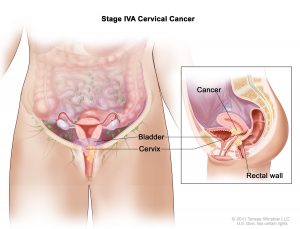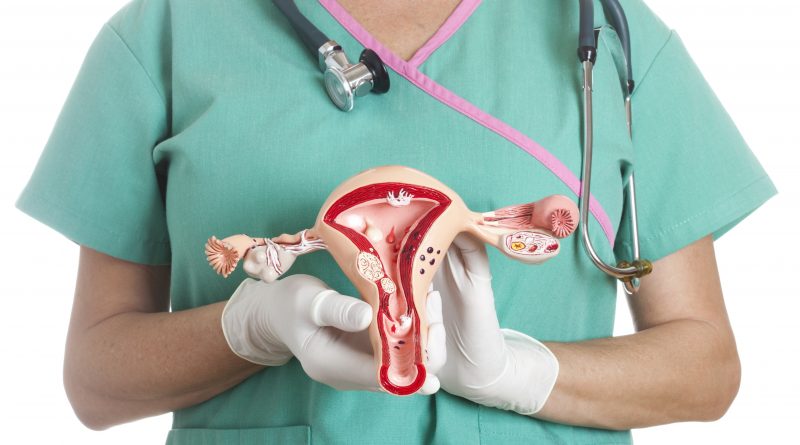Grim Scenario
One woman dies of cervical cancer every 8 minutes in India. In the absence of a nationwide screening program, there are disparities in screening, treatment, and also survival of cervical cancer patients…
By Abhigyan/Abhinav
“Cancer of the cervix has been the most important cancer among women in the past two decades. In India the peak age for cervical cancer incidence is 55–59 years”

If you are experiencing abnormal vaginal bleeding, such as bleeding after sex (vaginal intercourse), bleeding after menopause, bleeding and spotting between periods, and having longer or heavier (menstrual) periods than usual, you must consult your doctor. You might have the symptoms of cervical cancers. Bleeding after douching, or after a pelvic exam is a common symptom of cervical cancer but not pre-cancer.
In addition, an unusual discharge from the vagina − the discharge may contain some blood and may occur between your periods or after menopause and pain during sex can also be caused by conditions other than cervical cancer.
Women with early cervical cancers and pre-cancers usually have no symptoms. Symptoms often do not begin until a pre-cancer becomes a true invasive cancer and grows into nearby tissue.
Cervical cancer starts in the cells of the cervix, the part of the womb (or uterus) that opens to the vagina. Cervical cancer is caused by a virus called HPV (human papilloma virus). Women who do not get tested, or who do not get tested as often as they should, have the greatest chance of getting cervical cancer.
HPV is spread through sex, and it can cause an infection in the cervix. The infection usually doesn’t last very long because your body is able to fight it. HPV infection can change cervix cells into pre-cancer cells.
Some women have a greater chance of getting cervical cancer if theyhave HPV and it doesn’t go away, Have HIV or AIDS and Smoke.
Any man or woman who has ever had sex can get HPV. The virus is spread by sex. Condoms do not completely protect you from HPV, but they are helpful in protecting you from other infections that can be spread through sex. Cervical cancer starts in the cells of the cervix, the part of the womb (or uterus) that opens to the vagina. Cervical cancer is caused by a virus called human papilloma virus (HPV). Women who do not get tested, or who do not get tested as often as they should, have the greatest chance of getting cervical cancer.
HPV is spread through sex, and it can cause an infection in the cervix. The infection usually doesn’t last very long because your body is able to fight it. HPV infection can change cervix cells into pre-cancer cells.
Some women have a greater chance of getting cervical cancer if they have HPV and it doesn’t go away, have HIV or AIDS and smoke. If the body clears the infection, the cervical cells return to normal. But if the body doesn’t clear the infection, the cells in the cervix can continue to change abnormally. This can lead to precancerous changes or cervical cancer.
Cervical cancer is on the declining trend in India according to the population-based registries yet it continues to be a major public health problem for women in India. Multifactorial causation, potential for prevention, and the sheer threat it poses make cervical cancer an important disease for in-depth studies.
Specific types of oncogenic HPV-16, 18 have been identified in patients with cervical cancer. Other epidemiological risk factors are early age at marriage, multiple sexual partners, multiple pregnancies, poor genital hygiene, malnutrition, use of oral contraceptives, and lack of awareness.
A multipronged approach is necessary which can target areas of high prevalence identified by registries with a combination of behaviour change communication exercises and routine early screening with VIA. Sensitizing the people of the area, including menfolk, is necessary to increase uptake levels.
Vaccination against types 16 and 18 can also be undertaken after taking into confidence all stakeholders, including the parents of adolescent girls. Preventing and treating cervical cancer and reducing the burden are possible by targeting resources to the areas with high prevalence.
Cervical cancer is the commonest cause of death among women in developing countries.Mortality due to cervical cancer is also an indicator of health inequities,as 86% of all deaths due to cervical cancer are in developing, low- and middle-income countries.
One woman dies of cervical cancer every 8 minutes in India. For every 2 women newly diagnosed with breast cancer, one woman dies of it in India. As many as 2,500 persons die every day due to tobacco-related diseases in India. Smoking accounts for 1 in 5 deaths among men and 1 in 20 deaths among women, accounting for an estimated 9,30,000 deaths in 2010.
India has a population of 432.2 million women aged 15 years and older who are at risk of developing cancer. It is the second most common cancer in women aged 15–44 years.
In the absence of a nationwide screening program, there are disparities in screening, treatment, and also survival. Cancer of the cervix has been the most important cancer among women in the past two decades. In India the peak age for cervical cancer incidence is 55–59 years.
The treatment depends mainly on the size of the tumour and whether the cancer has spread. If a woman is of childbearing age, the treatment choice may also depend on whether she wants to become pregnant someday. Women with cervical cancer may be treated with surgery, radiation therapy, chemotherapy, radiation therapy and chemotherapy, or a combination of all three methods.
At any stage of disease, women with cervical cancer may need treatment to control pain and other symptoms, to relieve the side effects of therapy, and to ease emotional and practical problems. This kind of treatment is called supportive care, symptom management, or palliative care.
Surgery treats the cancer in the cervix and the area close to the tumour. Most women with early cervical cancer have surgery to remove the cervix and uterus. However, for very early (Stage 0) cervical cancer, a hysterectomy may not be needed. Other ways to remove the cancerous tissue include conization, cryosurgery, laser surgery, or LEEP.
Some women need a radical hysterectomy. A radical hysterectomy is surgery to remove the uterus, cervix, and part of the vagina. With either total or radical hysterectomy, the surgeon may remove both fallopian tubes and ovaries. The surgeon may also remove the lymph nodes near the tumor to see if they contain cancer. If cancer cells have reached the lymph nodes, it means the disease may have spread to other parts of the body.
Some women need a radical hysterectomy. A radical hysterectomy is surgery to remove the uterus, cervix, and part of the vagina. With either total or radical hysterectomy, the surgeon may remove both fallopian tubes and ovaries

